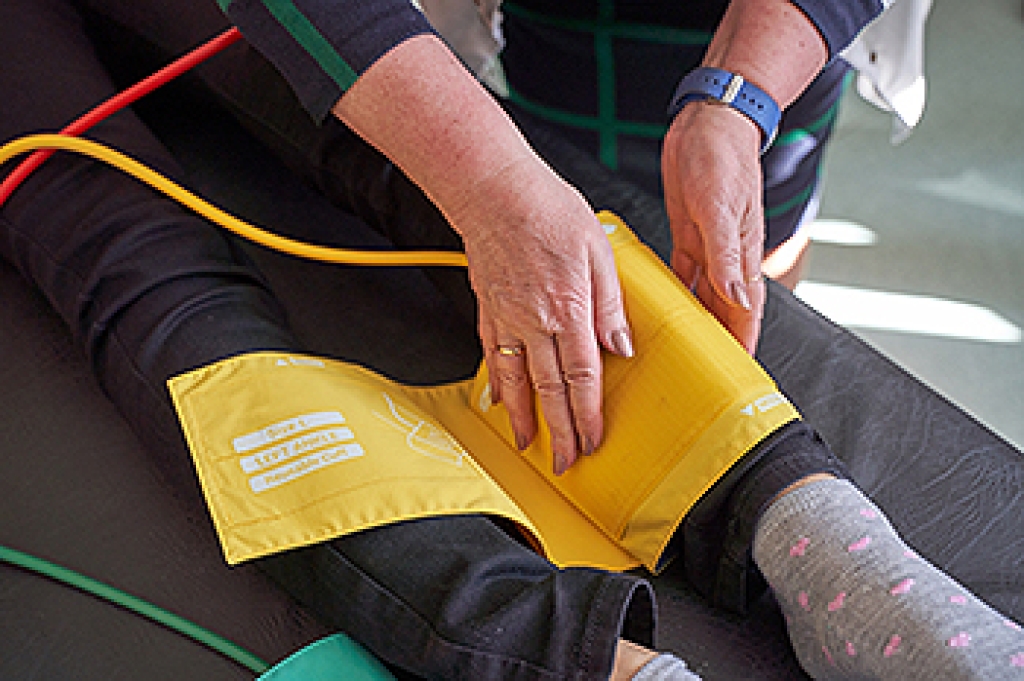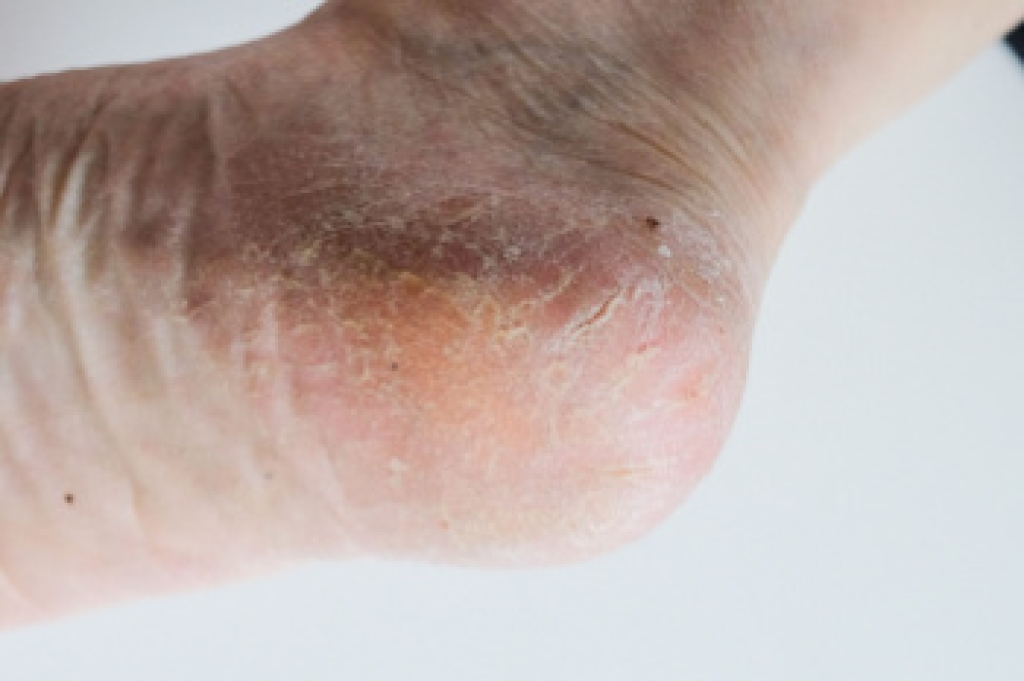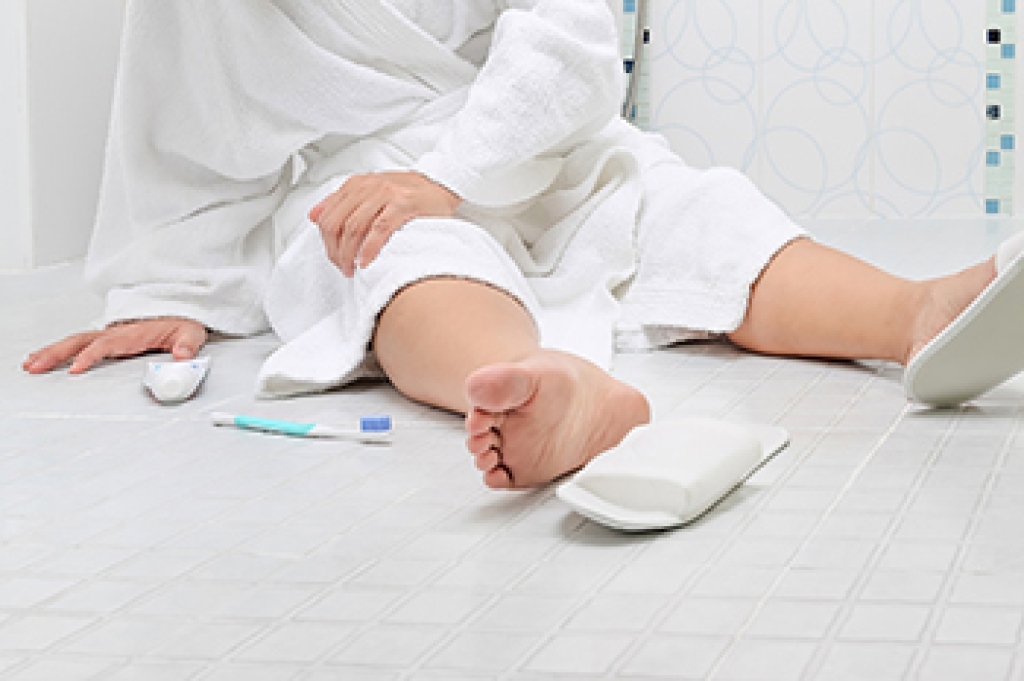 Peripheral artery disease, also known as PAD, is a condition in which the arteries that supply blood to your arms and legs narrow and harden due to a buildup of fatty deposits. This causes a reduction of blood flow, most commonly in the legs. If the blocked blood flow is severe enough it could lead to tissue death, which could ultimately lead to foot or leg amputation. Some symptoms of PAD may include pain, numbness, or heaviness in the legs especially when walking or standing, weak or absent pulses in the legs or feet, poorly healing sores or wounds on the feet, skin discoloration, a lower temperature in one leg, poor nail growth on the toes, and decreased hair growth on the legs. However, people who have PAD often do not show any symptoms, and the condition becomes apparent only through physical examination and imaging studies. Contributing risk factors for PAD can include smoking, obesity, physical inactivity, and a diet that is high in fats or cholesterol. For more information about PAD and its effects on the health of your lower limbs, please speak with a local chiropodist.
Peripheral artery disease, also known as PAD, is a condition in which the arteries that supply blood to your arms and legs narrow and harden due to a buildup of fatty deposits. This causes a reduction of blood flow, most commonly in the legs. If the blocked blood flow is severe enough it could lead to tissue death, which could ultimately lead to foot or leg amputation. Some symptoms of PAD may include pain, numbness, or heaviness in the legs especially when walking or standing, weak or absent pulses in the legs or feet, poorly healing sores or wounds on the feet, skin discoloration, a lower temperature in one leg, poor nail growth on the toes, and decreased hair growth on the legs. However, people who have PAD often do not show any symptoms, and the condition becomes apparent only through physical examination and imaging studies. Contributing risk factors for PAD can include smoking, obesity, physical inactivity, and a diet that is high in fats or cholesterol. For more information about PAD and its effects on the health of your lower limbs, please speak with a local chiropodist.
Peripheral artery disease (PAD) is a serious condition that can increase your risk of having a stroke or heart attack. If you have symptoms of PAD, please consult with one of the chiropodists from The Footcare Centre. Our chiropodists will assess your condition and provide you with quality foot and ankle treatment.
What Is Peripheral Artery Disease?
Peripheral artery disease (PAD) is a condition in which the arteries that supply blood to the lower limbs narrow and harden due to a buildup of arterial plaque. PAD causes a reduction in blood flow to the legs and other extremities.
Symptoms
Often, people with PAD experience no symptoms, especially in the early stages. If PAD continues to worsen, the first sign of PAD may be claudication, pain and cramping in the legs while walking, caused by the reduction of blood supply to the muscles of the legs.
Other potential symptoms include:
- Numbness or weakness in the legs
- Coldness in the legs or feet
- Slow-healing sores or wounds
- Skin discoloration or hair loss on the legs
- Slow growth of toenails
Diagnosis
Most often chiropodists utilize a test called an ankle-brachial index (ABI). An ABI test compares blood pressure in your arm to the blood pressure in your ankle to see if any abnormality occurs. Vascular tests look at the blood flow in the legs and are generally painless and non-invasive.
Treatment
Lifestyle changes, such as eating a healthy diet and exercising regularly can help limit further arterial plaque buildup. Taking your prescribed medications can reduce your risk of stroke and heart attack. In some cases, surgery may be required to improve blood flow.
If you have any questions please feel free to contact our office located in Niagara Falls, ON .




